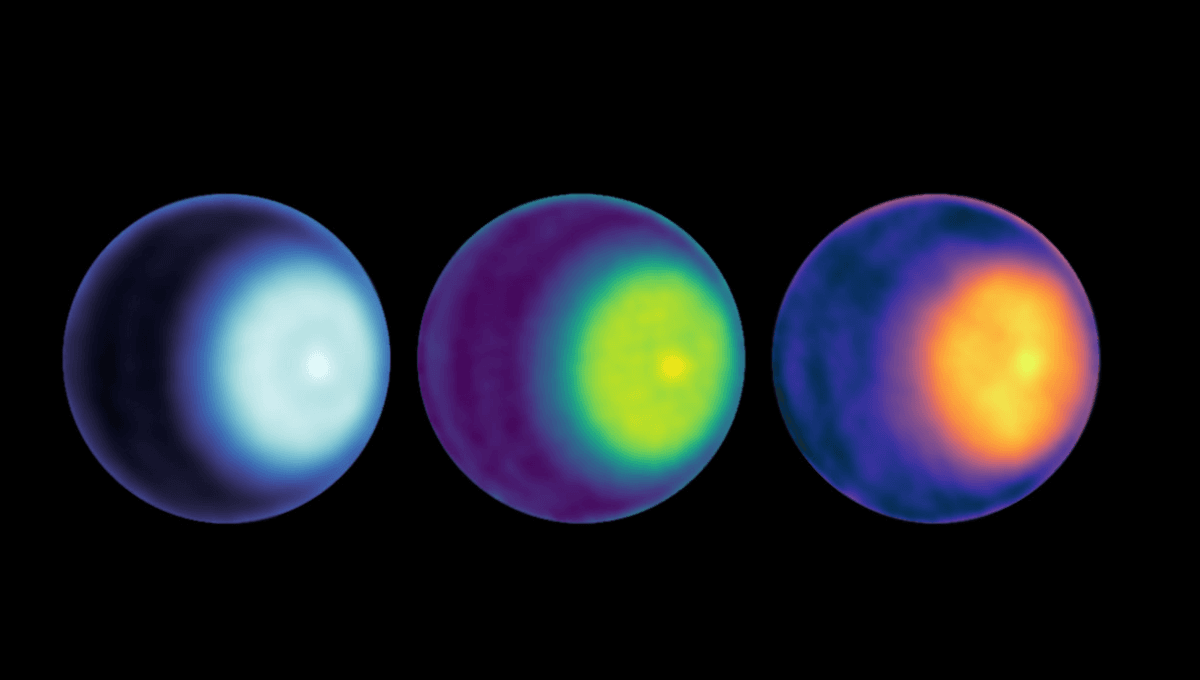
A deep look at Uranus has revealed strong evidence of a polar cyclone swirling on top of the icy giant. This is something that’s never been definitively observed on the planet before, but affirms the long-held rule that all planets with an atmosphere in our Solar System, whether rocky or gas, will possess polar vortexes.
The new insights come from scientists at NASA’s Jet Propulsion Laboratory who have been studying data collected by the Very Large Array. By examining radio waves emitted from Uranus, the team found that the air circulating at the north pole is likely to be warmer and drier – a sure sign of a strong cyclone.
The latest findings mean that cyclones (or anti-cyclones, which rotate in the opposite direction to the planet’s orbit) have now been seen at the poles on every planet in our Solar System except for Mercury, which has no substantial atmosphere.
The observation was made possible thanks to the Very Large Array, a collection of 28 radio telescopes located in the dusty desert of New Mexico, which is able to peer through the ice giant’s clouds and take a look at what’s going on underneath.
Furthermore, Earth-bound astronomers of today are fortunate to be in a position where Uranus is very visible from its current position in orbit. Uranus makes a complete orbit around the Sun in about 84 Earth years and it’s spent the past few decades in a position that’s meant its poles weren’t pointed toward Earth. Since around 2015, however, the icy giant has been perfectly posed for scientists to get a good glimpse.
“These observations tell us a lot more about the story of Uranus. It’s a much more dynamic world than you might think,” Alex Akins, lead study author from NASA’s Jet Propulsion Laboratory in Southern California, said in a statement. “It isn’t just a plain blue ball of gas. There’s a lot happening under the hood.”
When the Voyager-2 spacecraft cruised past Uranus in 1986, it observed a bunch of fascinating phenomena, including a swirling feature that looked like its methane clouds were twirling at the planet’s south pole.
While this appeared to be vivid evidence of a polar cyclone, infrared measurements from Voyager didn’t detect temperature changes, suggesting it was something else.
This new research, however, indicates that Voyager may have actually observed a polar cyclone decades ago. Alternatively, something stranger might be going on.
“Does the warm core we observed represent the same high-speed circulation seen by Voyager?” Akins added. “Or are there stacked cyclones in Uranus’ atmosphere? The fact that we’re still finding out such simple things about how Uranus’ atmosphere works really gets me excited to find out more about this mysterious planet.”
The study is published in the journal Geophysical Research Letters.
Source Link: A Fresh Glimpse Of Uranus Shows It Has A Swirling Polar Vortex